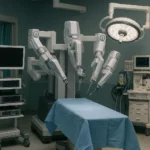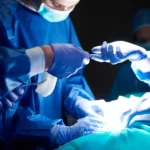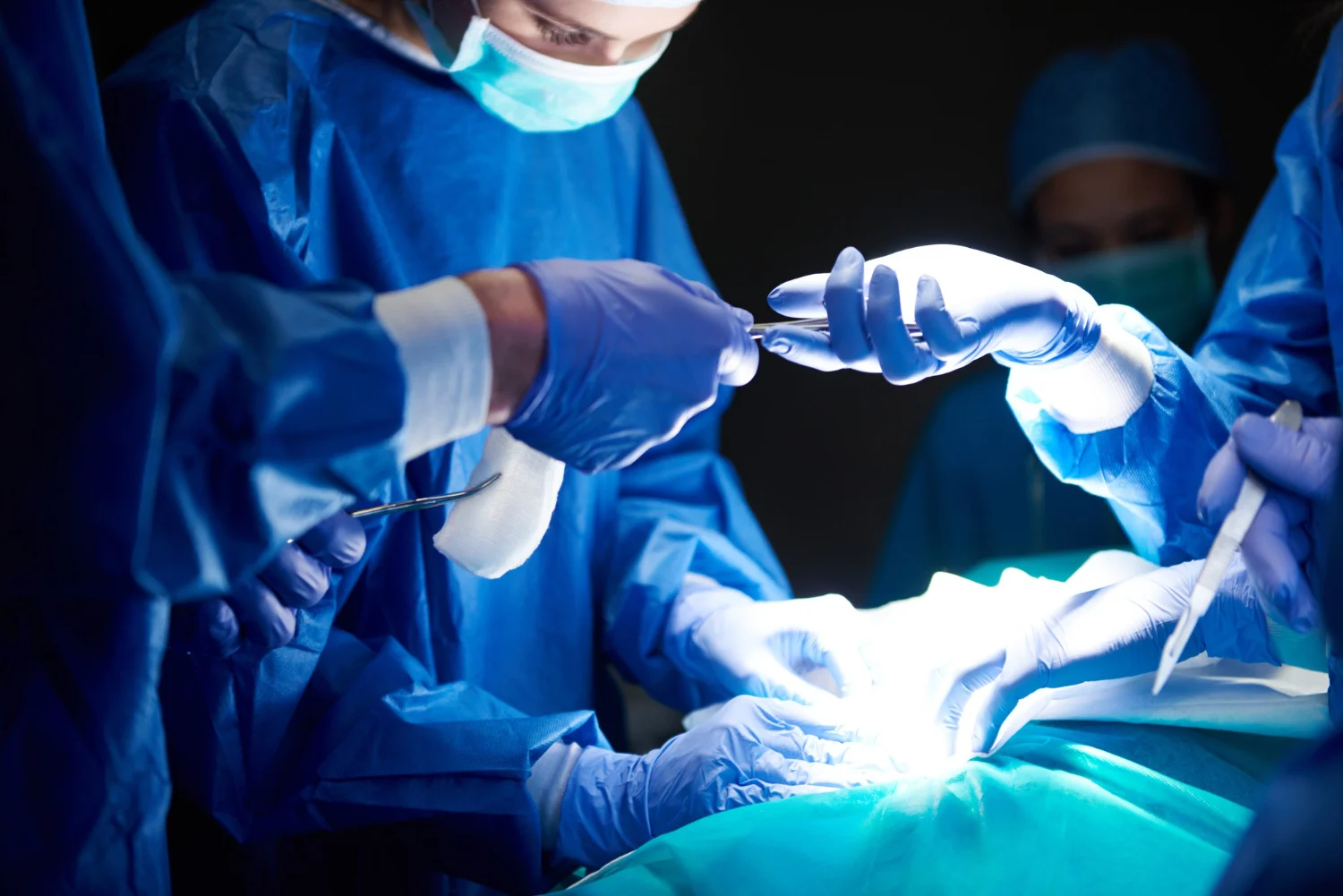3D Facial Reconstruction : Revolutionizing Plastic Surgery
Facial injuries due to trauma or cancer surgeries result in a life transformation. Conventional facial reconstruction techniques, however, are unable to restore full functional and cosmetic form. Nowadays, 3D facial reconstruction has been widely introduced in this field, restoring new hope with accurate, patient-centric and minimally invasive solutions that focus on both form and function. This technique heralds a movement in which we start restoring faces and lives.
Understanding Facial Reconstruction
Facial reconstruction is a very important branch of plastic surgery that aims to restore the strength and appearance of the face after trauma, congenital deformities, or diseases such as skin cancer involving the face. In most cases, injuries from accidents, burns or surgery injure the bones, soft tissues or facial landmarks such as the nose or jaw, with respect to diminishing the potential to eat, speak or express one’s emotions.
The traditional procedures involved in tissue grafting and bone transplant usually demand several surgical interventions, prolonged healing and difficulty in restoration of facial symmetry. If there are interruptions in healing, then such factors adversely influence mental healing.
Here is where 3D imaging and 3D printing are revolutionizing the field through accurate planning and manufacturing of personalised implants or prosthetics. Such technology translates into increased accuracy, superior aesthetics and reduced recovery time, allowing the patient to regain not just the function but also the psychological and quality-of-life aspects.
The Rise of 3D Printing in Medicine
- Participated in medical revolution from early prototyping
- Most useful in prosthetics, dentistry, and bone reconstructions
- Provides unmatched precision, velocity, and customization for surgical procedures
- Especially relevant to facial reconstruction surgery and procedures falling under plastic surgery
How 3D Printing Works in Facial Reconstruction
Step-1: Imaging and Data Collection
This starts with an image of a high-resolution CT or MRI of a patient’s face. Subsequently, those scans gather anatomical data necessary for accurate reconstruction modeling.
Step-2: 3D Digital Model Making
The imaging data are converted to a scaled and accurate 3D digital model with the help of CAD software. As a result, this enables surgeons and biomedical engineers to visualize and plan reconstruction procedures in the virtual environment.
Step-3: Designing Custom Parts
Custom-made surgical implants, guides or facial prosthetics are designed specifically for the patient. Every curve and contour of the implant was designed to fit perfectly with the existing facial tissue.
Step-4: 3D Printing
Final designs are then manufactured in an advanced 3D printer. One of the biocompatible materials applied in 3D printing is titanium (for bone replacement) or medical-grade polymers (for soft tissues).
Step-5: Application of Bio-Inks (optional)
In advanced practice, bio-inks that allow the printing of living cells are being used to evaluate regenerative alternatives in facial tissue, namely, cartilage or skin.
Step-6: Surgical Utilization
Printed models in surgery will act as golden guides for incisions, thus helping neurologists reposition lost bone with greater fidelity and furthermore, reconstructing external features of the ear and nose.
Step-7: Improved Outcomes
Since 3D printing provides high precision, this minimizes for sure surgical time, complications and symmetry, thus providing altogether the aesthetic and functional outcome improvement for the patient involved.
3D Bioprinting: The Next Frontier
- To replicate tissues such as skin, cartilage and bone, living cells and scaffolds are employed.
- Future printing of facial tissue in full may take place.
- Experimental but advancing at a very high speed.
- Challenges: vascularisation, integrated ward between long and short.
- The ultimate goal is to fully restore the damaged facial tissue, without including synthetic materials.
Benefits of 3D Printing in Facial Reconstruction
- Implants come in a full set for every patient.
- High precision reduces errors.
- They shorten surgical operations and speed healing.
- Fewer procedures also mean lower total costs.
- Better in cosmetics and psychologies.
- Enhances planning in complex trauma and plastic surgeries.
Challenges and Limitations
- High initial cost of technology
- Requires trained multidisciplinary teams
- Limited long-term materials
- Regulatory hurdles and insurance issues
- Limited access in low-income regions
The Future Outlook: What Lies Ahead?
- Widespread adoption as costs fall
- Integration with AI, robotics, and VR
- Surgeons of the future to train with tech tools
- Full bioprinting of facial tissues expected
- Global collaboration to expand accessibility
- 3D printer advancements will continue to reshape personalized medicine.
Why should you choose Regimen Healthcare?
At Regimen Healthcare, we understand that facial reconstruction is about more than just medical treatment—it is about restoring identity, confidence, and quality of life. Therefore, we work closely with internationally renowned surgeons who specialise in facial trauma, cancer recovery, and complex plastic surgery. What’s more, what sets us apart is our patient-first approach, ensuring every case receives individualised planning and care.
- We partner with top-tier hospitals equipped with cutting-edge 3D printing and surgical technologies.
- Our team facilitates the entire process—from expert consultation and treatment planning to visa support, stay arrangements and post-operative follow-up.
- Patients benefit from cost-effective treatment without compromising quality, making Regimen Healthcare a trusted name in international medical coordination.
Whether you are looking for facial reconstruction after trauma or post-oncology surgery, Regimen Healthcare ensures a smooth, safe and successful journey toward recovery.
Why should you choose India?
India has rapidly emerged as a global hub for advanced medical treatments, including facial reconstruction using 3D printing. The country’s combination of high-quality healthcare infrastructure and affordability makes it an ideal destination for international patients seeking complex procedures like facial reconstruction surgery.
- Indian hospitals are equipped with world-class technology, including state-of-the-art 3D printers used in surgery.
- Surgeons in India are internationally trained, with expertise in both traditional and modern facial reconstruction and plastic surgery techniques.
- The cost of treatment in India is a fraction of what it would be in the US, UK, or Europe—without any compromise on quality.
- Shorter waiting times, multilingual medical staff, and seamless patient coordination ensure a comfortable experience.
- Many hospitals have international patient departments that provide tailored support throughout the medical journey.
For patients seeking world-class care in facial trauma, oncology surgery recovery, or congenital facial correction, India offers both excellence and empathy in medical care.
Conclusion
Facial reconstruction has turned into a genuinely multidisciplinary art, tech and human morality. It has become a much awaited breakthrough as 3D printers are available to patients today to help them achieve renewability in both function and dignity. Advances in this industry are capturing everything—from facial prosthetics for disfigurements on the outside to internal implants made entirely with the accuracy of a 3D printer—all this and much more.
Traditional techniques being replaced by faster, more accurate, less invasive options include the healing of the inside and outside-possible to an individual suffering facial skin cancer or severe trauma. Whether you want to go for facial reconstruction surgery after an accident or want help after oncology surgery, everything today is bigger and very hopeful.
Thanks to the collaboration between global talents and technology and heading institutions such as the Regimen Healthcare, quality care is now available at an affordable price, even in India, for such patients from different parts of the world. The future of facial reconstruction becomes more personal, powerful and profoundly human than medical.
If you or a loved one needs expert facial reconstruction after trauma or cancer, take the next step toward healing and transformation. Reach out to Regimen Healthcare for a free consultation with leading 3D reconstruction specialists in India. Let us help you restore not just your face, but your confidence and quality of life.
📞 Contact Us: +91-9310356465
📧 Email: [email protected]
🌐 Website: www.regimenhealthcare.com
Frequently Asked Questions (FAQs)
1. What is 3D facial reconstruction?
It’s a surgical process using 3D-printed implants or guides to restore facial features lost due to trauma, cancer, or congenital issues.
2. Is 3D printing safe in surgery?
Yes. 3D printing uses biocompatible, medically approved materials and helps improve surgical accuracy.
3. What materials are used in 3D facial reconstruction?
Common materials include titanium, medical-grade polymers, and bio-inks for tissue engineering.
4. How long does the recovery take?
Recovery varies by case, but most patients experience faster healing compared to traditional methods.
5. Is this treatment available in India?
Yes. India has advanced medical centers that specialize in 3D facial reconstruction using the latest technologies.
6. What is the cost of 3D facial reconstruction in India?
Costs are significantly lower than in Western countries, while maintaining world-class quality.
7. Can I get a virtual consultation before coming to India?
Yes. Regimen Healthcare offers remote consultations to evaluate your case before you travel.
8. Will my face look natural after the surgery?
The goal is to achieve both functional and natural-looking results with high precision.
9. Can children undergo 3D facial reconstruction?
Yes, depending on the condition and age. Pediatric reconstructive cases are assessed individually.
10. How do I start the process with Regimen Healthcare?
Contact us via phone, email, or website. Share your reports, and our team will guide you step by step.







